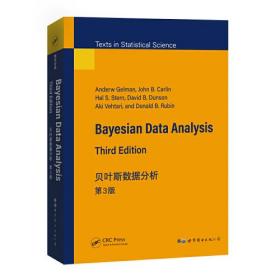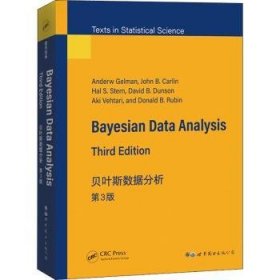很抱歉,该商品可能已下架或被删除
相似商品
-
 Bayesian data analysis全新
Bayesian data analysis全新¥106.95
-
 {正版现货新书} 贝叶斯数据分析 第3版 9787519261818 【美】Andrew Gelman等全新
{正版现货新书} 贝叶斯数据分析 第3版 9787519261818 【美】Andrew Gelman等全新¥122.77
-
 贝叶斯数据分析 第3版全新
贝叶斯数据分析 第3版全新¥131.84
-
 贝叶斯数据分析 第3版九品
贝叶斯数据分析 第3版九品¥55.00
-
 Bayesian data analysis全新
Bayesian data analysis全新¥104.80
-
 Bayesian data analysis全新
Bayesian data analysis全新¥104.80
-
 贝叶斯数据分析 第3版 [美]AndrewGelman 世界图书出版公司 9787519261818八五品
贝叶斯数据分析 第3版 [美]AndrewGelman 世界图书出版公司 9787519261818八五品¥22.69
-
 贝叶斯数据分析 第3版九品
贝叶斯数据分析 第3版九品¥75.00
-
 Bayesian data analysis全新
Bayesian data analysis全新¥170.80
-
 贝叶斯数据分析 第3版(英文版)全新
贝叶斯数据分析 第3版(英文版)全新¥118.62
5S 后自动跳转到首页
去首页逛逛